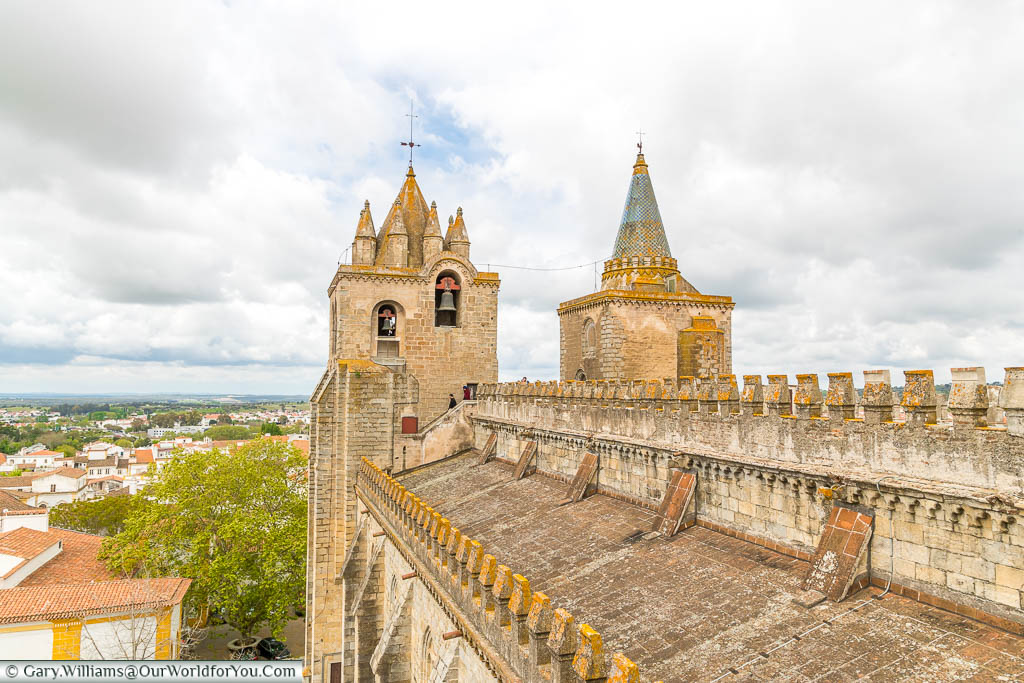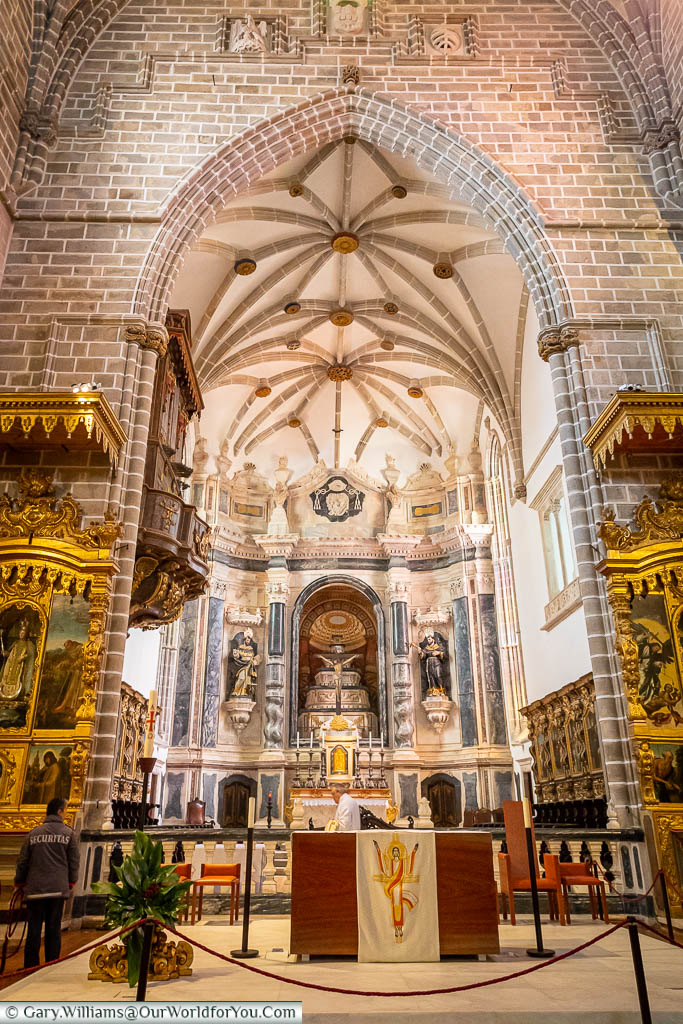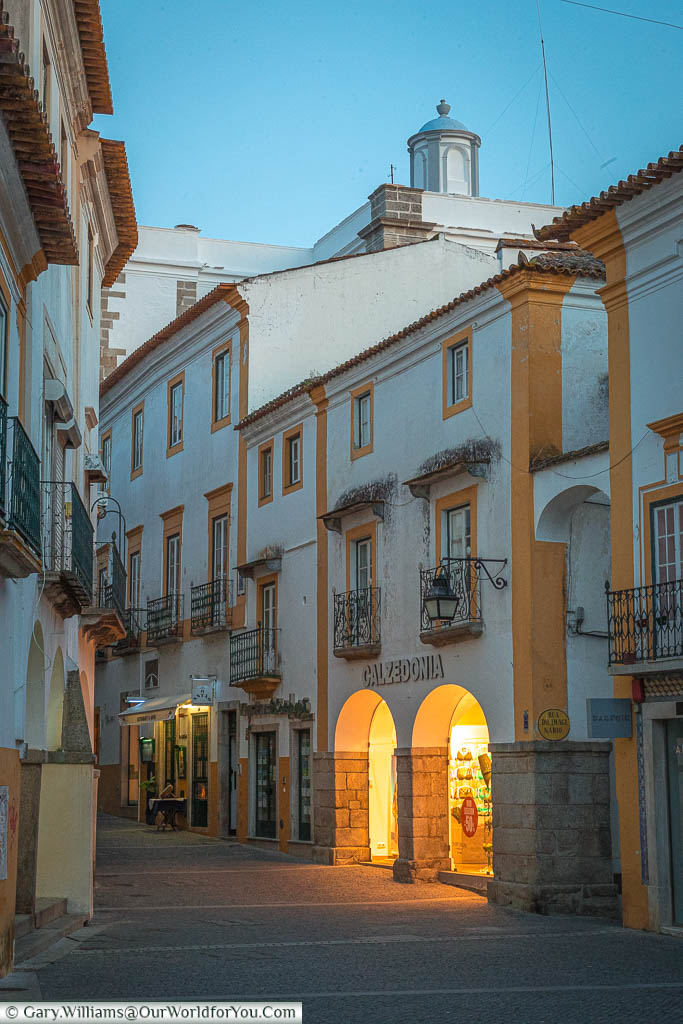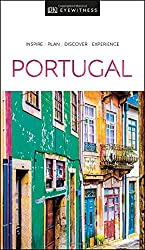
9 reasons to visit Évora in Portugal
Let’s start with a Chapel of Bones, a Roman Temple and a cork bikini.
If you’re looking for a location in Portugal that offers something a little different. Then I would definitely recommend the medieval city of Évora, in the Alentejo region of Portugal.
Évora’s entire historic centre is listed on the UNESCO World Heritage List. Which certainly isn’t surprising as it’s charming, picturesque and full of remarkable buildings and structures.

The lanes of Évora
Gary and I chose to stay for a couple of nights in Évora, during our Portuguese road trip and I’m so pleased we did. Évora was such a pleasant surprise and had a lovely local feel about it.
So, if you enjoy strolling ancient streets, with a slice of history around almost every turn, then I think you’ll love Évora.
Quick Links
It’s probably fitting that I start with the Romans, as they arrived here in 57BC. The incredible temple that now stands high in Évora is impressive, it’s also known as the Temple of Diana.

Roman Temple of Évora
The Corinthian Temple has been utilised in various ways over the centuries. However, today the Temple of Évora stands so proud in the city and truly symbolises the importance of Évora during the Roman rule.
Take a little stroll around the pleasant Jardim Diana just by the temple.
A reference guide
Our recent new found love is Portugal, it is such a beautiful country. While planning our trip, I used the DK Eyewitness books. I find them extremely informative, easy to follow and the pictures and maps tempt you into discovering more.
We used a previous version of this book to plan our north to south Portuguese road trip, now you can grab the revised copy.
The Praça do Giraldo is one of Évora’s main squares, and like so many other beautiful Portuguese praças, it is inlaid with the oh so familiar black and white tiles.

The Praça do Giraldo
The Praça do Giraldo is a reasonable size, at one end is the Church of Saint Antão overlooking the 16th-century Renaissance fountain. Then all along one side is a whitewashed colonnade, full of little boutiques and café’s tempting you in for a coffee.
I do love to sit and watch the world go by in these town squares, it’s a wonderful way to immerse yourself in local daily life.
Gary and I have visited many attractive churches and cathedrals over our years of travelling; however, the Cathedral of Évora has really stayed in my mind.
It wasn’t just the enchanting 14th-century gothic cloisters that were incredible, it was the fact that you could climb up onto its roof. Winding your way up the narrow staircase, you felt like you were sneaking your way up to somewhere you shouldn’t be.

A roof from the Cathedral of Évora
There were no restrictions as to where you could walk, you were free to roam anywhere, and we did. Cathedral of Évora stands at one of the highest spots in the city, hence, the views over the rooftops and the far-reaching countryside were breath-taking. This was one of the highlights of our visit to Évora.

Upon the roof of Évora Cathedral
Museum-city
The Historic Centre of Évora was listed as a UNESCO World Heritage Site in 1986. UNESCO refers to it as a museum-city, and it easy to see why. For a little more information on Évora take a look at the Visit Portugal website.
Évora Public Park is a lovely park and garden with so many pleasant spots to rest and enjoy the tranquil surroundings.

The D. Manuel Palace
Within the garden, you’ll be strolling amongst the remains of the old town Medieval wall. Also, there’s the 16th-century D. Manuel Palace and the Ruínas Fingidas or Fake Ruins from the 19th- century.

A bold peacock in full show
Although what may be a surprise encounter are the elegant peacocks that promenade around the ruins. Displaying their plumage for all to see.
We strolled into Praça 1º de maio just after we arrived in Évora. It was a Sunday the restaurants were overflowing with families enjoying their day, and you got such a warm, friendly feeling from the place.

A view over the town from the San Francisco church
The church that stands pride of place in this square is St Francis Church (Igreja de São Francisco).
Take a wander inside and head to the balcony which overlooks the square.
You get a delightful view across the whitewashed lanes and the terracotta rooftops below.

Inside the Igreja de São Francisco
Why not?
There is no way we could head to Évora and not visit the Chapel of Bones. This little chapel is part of St Francis Church, and it is fascinating.

Inside the Chapel of Bones
There are around 5,000 skulls lining the walls, and that’s before I even mention all the other parts of the skeleton.
Row after row each bone is stacked painstakingly alongside another.
The chapel was built in the 17th-century by three monks, who wanted to convey that life was transient.
There are very few ossuary’s to be found nowadays, so it was incredibly interesting to observe.

A close-up in the Chapel of Bones in Évora
As you enter the Capela dos Ossos there is a message above the entrance that reads; “Nós ossos que aqui estamos pelos vossos esperamos” – “We, the bones that are here, await yours”. (A rough translation, although it sounds a bit spooky).
Discover more
If you’re touring Portugal on a road trip, take a look at our post on the UNESCO sites in Portugal. All of them are incredible, I really don’t think I could choose a favourite.
When you arrive in Évora, you won’t fail to notice the aqueduct. King João III requested it to be constructed in 1532. It was built under the direction of the royal architect Francisco de Arruda, who also designed Belém Tower.

The Agua de Prata Aqueduct

Homes under the arches
As the arches gradually get closer and closer to the city centre along Rua do Cano, every space is utilised. With homes and shops being squeezed into each arch until the aqueduct disappears underground.
In this region of Portugal not only is it renowned for its olive oil, but it also has forests of cork oaks. When we were driving across the Portuguese countryside, we spotted some of the cork trees which had the cork removed.

All things cork

Really a cork Bikini
The cork is removed from the trees around every nine years. Although the tree needs to be between 25 and 30 years old, the first time this is carried out.
So, you’ll notice when wandering through the town, that you can buy an endless number of items produced in cork, even a bikini.
Tempted To...
Discover more of Portugal on a road trip, you'll be amazed how easy it is to tour around by car. Like us you can create your own adventure, take a look at our ‘Memories of a Portuguese Road Trip’, to see how easy it is.
Take a peek at the offers at Rental Cars, they cover all budgets and allow you to pick up and drop off at different destinations.
One of the best ways to discover the true feel of a place is just to put on your comfy shoes and go for a wander.
There are areas of Évora that get busy, although it’s so easy just to head back a few streets and you’ll have the tranquil cobbled lanes to yourself.

A quiet cobbled lane in Évora

The whitewashed lane of Évora at dusk
We loved strolling amongst the mustard and whitewashed coloured homes, with no particular agenda, just ambling around and see where the streets lead us.
Why not make a day of it?
If you’re based in Lisbon and fancy discovering Évora’s history, jump on this full-day tour.
You’ll be picked up from your Lisbon hotel and whisked off to this UNESCO city.
* This post may contain links to affiliated sites where we earn a small commission at no additional charge to you.
Inspired to visit Évora?
Pack your bag and start planning, there is so much to see in this ancient city.

(Why not Pin It for Later?)
If you enjoy what you see, and you’d like regular updates then join us for a monthly newsletter.

